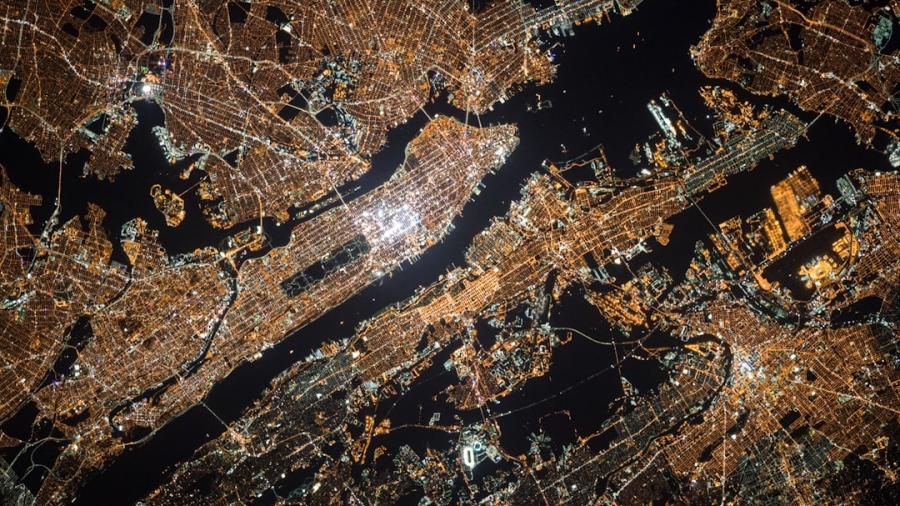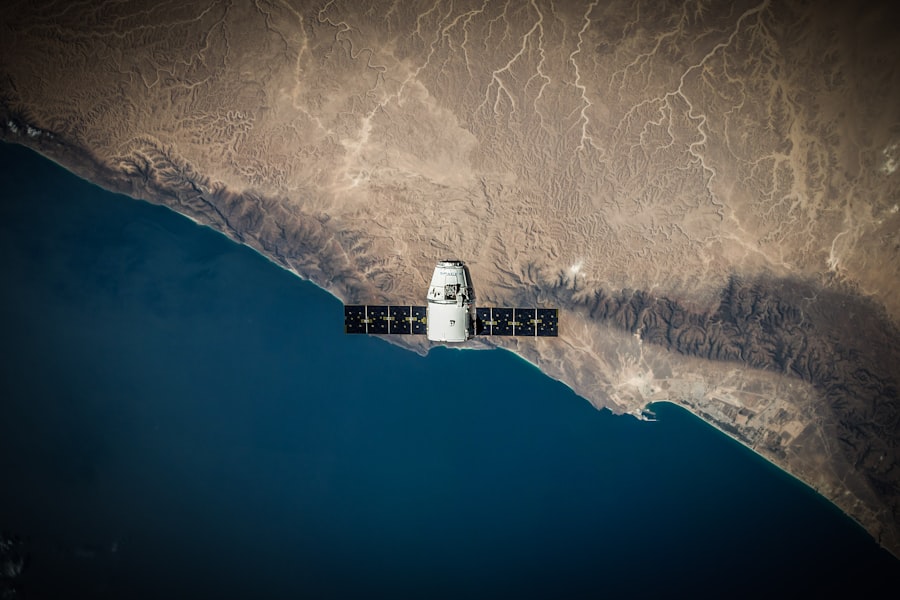The intersection of artificial intelligence (AI) and natural disaster management is a rapidly evolving field with significant potential to improve our understanding and response to catastrophic events. Natural disasters, including hurricanes, earthquakes, wildfires, and floods, pose substantial risks to human life, infrastructure, and ecosystems. As climate change exacerbates the frequency and intensity of these events, there is an urgent need for innovative solutions.
AI, with its ability to process large datasets and identify complex patterns, has emerged as a powerful tool in addressing these challenges. AI’s application in natural disaster management represents a fundamental shift in approach to risk assessment and crisis response. Traditional methods often rely on historical data and static models, which may not fully capture the complexities of current environmental challenges.
In contrast, AI systems can analyze real-time data from diverse sources, such as satellite imagery, social media, and sensor networks, to generate timely and actionable insights. This capability enhances prediction accuracy for disaster occurrence and location, while also informing effective response and recovery strategies. The integration of AI into disaster management is becoming increasingly essential for protecting communities in an era of growing environmental instability.
By leveraging machine learning algorithms and predictive analytics, researchers and emergency management professionals are developing new methods for disaster preparedness and response. These advancements not only improve our ability to anticipate and mitigate the impacts of natural disasters but also contribute to more resilient and adaptive disaster management systems.
Key Takeaways
- AI has the potential to revolutionize the way we predict and prevent natural disasters, offering new tools and insights to improve disaster management.
- AI can analyze vast amounts of data to identify patterns and trends that can help predict natural disasters such as earthquakes, hurricanes, and floods with greater accuracy.
- Early warning systems powered by AI can provide crucial information to communities and authorities, allowing for timely evacuation and preparation efforts.
- AI’s contribution to disaster prevention and mitigation includes the use of drones and robots for search and rescue missions, as well as the development of smart infrastructure to withstand natural disasters.
- Despite its potential, AI also faces challenges and limitations in predicting and preventing natural disasters, such as data quality and accessibility, as well as the need for human oversight and interpretation.
The Use of AI in Predicting Natural Disasters
Enhancing Meteorological Predictions
One prominent application is in the realm of meteorology, where AI algorithms analyze historical weather patterns alongside real-time atmospheric data to improve predictions of severe weather events such as hurricanes and tornadoes. By employing neural networks that can learn from vast datasets, meteorologists can identify subtle indicators that may precede a disaster, allowing for more precise forecasts.
Predicting Geological Disasters
AI is making strides in geological disaster prediction, particularly in the case of earthquakes. Traditional seismic models often struggle to predict when and where an earthquake will occur due to the complex nature of tectonic movements. However, researchers are now utilizing machine learning techniques to analyze seismic data and identify patterns that may indicate impending seismic activity.
Fostering Resilience in Vulnerable Communities
By integrating data from various sources, including ground sensors and satellite observations, AI systems can provide insights that enhance our understanding of earthquake risks. This predictive power not only aids in preparedness efforts but also fosters a culture of resilience within communities that are vulnerable to such natural calamities.
AI’s Role in Early Warning Systems
The implementation of AI in early warning systems represents a significant advancement in disaster management strategies. These systems are designed to provide timely alerts to populations at risk, enabling them to take necessary precautions before a disaster strikes. AI enhances these systems by processing real-time data from multiple sources, including weather satellites, ocean buoys, and ground-based sensors.
By analyzing this information rapidly, AI can detect anomalies that may signal an impending disaster, such as rising sea levels or unusual seismic activity. This capability allows for quicker decision-making and more effective communication with at-risk communities. Furthermore, AI-driven early warning systems can be tailored to specific types of disasters, ensuring that alerts are relevant and actionable.
For instance, in the case of tsunamis, AI can analyze seismic data alongside oceanographic information to predict wave heights and arrival times with greater accuracy. This level of specificity is crucial for emergency responders who need to prioritize evacuation routes and allocate resources effectively. Additionally, these systems can incorporate machine learning algorithms that continuously improve their predictive capabilities based on new data inputs.
As a result, communities equipped with AI-enhanced early warning systems are better positioned to respond swiftly and effectively when disaster strikes.
AI’s Contribution to Disaster Prevention and Mitigation
Beyond prediction and early warning, AI plays a pivotal role in disaster prevention and mitigation efforts. By analyzing historical data on past disasters, AI can identify vulnerabilities within communities and infrastructure that may exacerbate the impact of future events. For example, machine learning algorithms can assess building designs, land use patterns, and population density to determine which areas are most at risk during a flood or earthquake.
This information is invaluable for urban planners and policymakers who seek to implement proactive measures that reduce risk exposure. Moreover, AI can facilitate the development of more resilient infrastructure through predictive maintenance strategies. By utilizing sensors embedded in critical infrastructure such as bridges, dams, and power lines, AI systems can monitor structural integrity in real time.
When anomalies are detected—such as unusual vibrations or stress levels—these systems can alert maintenance teams to potential issues before they escalate into catastrophic failures. This proactive approach not only enhances safety but also minimizes economic losses associated with infrastructure damage during natural disasters. As communities increasingly adopt AI-driven strategies for disaster prevention and mitigation, the potential for reducing human suffering and economic disruption becomes more tangible.
Challenges and Limitations of AI in Predicting and Preventing Natural Disasters
Despite the promising applications of AI in disaster management, several challenges and limitations must be addressed to fully realize its potential. One significant hurdle is the quality and availability of data. Effective machine learning models rely on large datasets that accurately represent the phenomena being studied.
In many regions, particularly those that are under-resourced or affected by ongoing conflicts, comprehensive data collection may be lacking. This scarcity can hinder the development of robust predictive models and limit their applicability in real-world scenarios. Additionally, the complexity of natural disasters poses another challenge for AI applications.
While machine learning algorithms excel at identifying patterns within data, they may struggle to account for the myriad variables that influence disaster dynamics. For instance, predicting the exact path of a hurricane involves numerous factors such as wind patterns, ocean temperatures, and atmospheric pressure changes—all of which can interact in unpredictable ways. As a result, while AI can enhance our understanding of these events, it cannot eliminate uncertainty entirely.
Acknowledging these limitations is crucial for setting realistic expectations regarding the capabilities of AI in disaster prediction and prevention.
Ethical Considerations in the Use of AI for Disaster Management
Data Privacy and Security Concerns
The collection and analysis of vast amounts of personal data, such as location information from mobile devices, can enhance predictive capabilities but also pose risks to individual privacy rights. Ensuring that data is collected transparently and used responsibly is essential for maintaining public trust in AI-driven systems.
Risks of Inequity in Disaster Response
Moreover, there is a risk that reliance on AI could lead to inequities in disaster response efforts. Communities with limited access to technology or resources may not benefit equally from advancements in AI applications. This disparity could exacerbate existing vulnerabilities among marginalized populations during disasters.
Towards an Inclusive Approach
Therefore, it is imperative for policymakers and practitioners to adopt an inclusive approach that prioritizes equitable access to AI technologies while actively engaging affected communities in decision-making processes. By addressing these ethical considerations head-on, we can work towards a future where AI serves as a force for good in disaster management.
Future Outlook: Advancements in AI for Natural Disaster Prediction and Prevention
Looking ahead, the future of AI in predicting and preventing natural disasters appears promising as advancements continue to unfold at a rapid pace. Emerging technologies such as quantum computing hold the potential to revolutionize data processing capabilities, enabling even more sophisticated models for predicting complex natural phenomena. As researchers explore new algorithms and methodologies, we can expect significant improvements in forecasting accuracy and response strategies.
Furthermore, the integration of AI with other technologies—such as the Internet of Things (IoT) and blockchain—could enhance disaster management efforts even further. IoT devices equipped with sensors can provide real-time data on environmental conditions, while blockchain technology can facilitate secure data sharing among stakeholders involved in disaster response efforts. This interconnectedness will foster collaboration among governments, NGOs, and communities, ultimately leading to more effective disaster preparedness initiatives.
In conclusion, while challenges remain in harnessing the full potential of AI for natural disaster prediction and prevention, ongoing research and innovation promise a future where technology plays an integral role in safeguarding lives and enhancing resilience against nature’s most formidable forces. As we continue to explore this dynamic intersection between artificial intelligence and disaster management, it is essential to remain vigilant about ethical considerations while striving for equitable solutions that benefit all members of society.
While exploring the role of AI in predicting and preventing natural disasters, it’s also crucial to consider how technology influences other areas of our lives, such as social media content creation. A related article that delves into this topic is “The Best Software for Social Media Content: A Comprehensive Guide.” This guide provides insights into the latest tools that can help content creators optimize their workflow and enhance their digital presence, which is increasingly important in a world where technology and media are so intertwined. You can read more about these tools and their features by visiting The Best Software for Social Media Content: A Comprehensive Guide.
FAQs
What is the role of AI in predicting natural disasters?
AI plays a crucial role in predicting natural disasters by analyzing large amounts of data from various sources such as satellite imagery, weather patterns, and seismic activity. It can identify patterns and trends that may indicate an impending natural disaster, allowing for early warnings and preparations.
How does AI help in preventing natural disasters?
AI helps in preventing natural disasters by providing accurate and timely predictions, which allows authorities to take proactive measures such as evacuations, reinforcing infrastructure, and implementing disaster preparedness plans. Additionally, AI can be used to develop and optimize disaster response strategies.
What are some examples of AI technologies used in predicting and preventing natural disasters?
Some examples of AI technologies used in predicting and preventing natural disasters include machine learning algorithms for analyzing data, predictive modeling for forecasting events, and computer vision for analyzing satellite imagery and identifying potential risks.
What are the benefits of using AI in predicting and preventing natural disasters?
The benefits of using AI in predicting and preventing natural disasters include improved accuracy and reliability of predictions, early warnings for at-risk areas, better resource allocation for disaster response, and overall reduction in the impact of natural disasters on communities and infrastructure.



